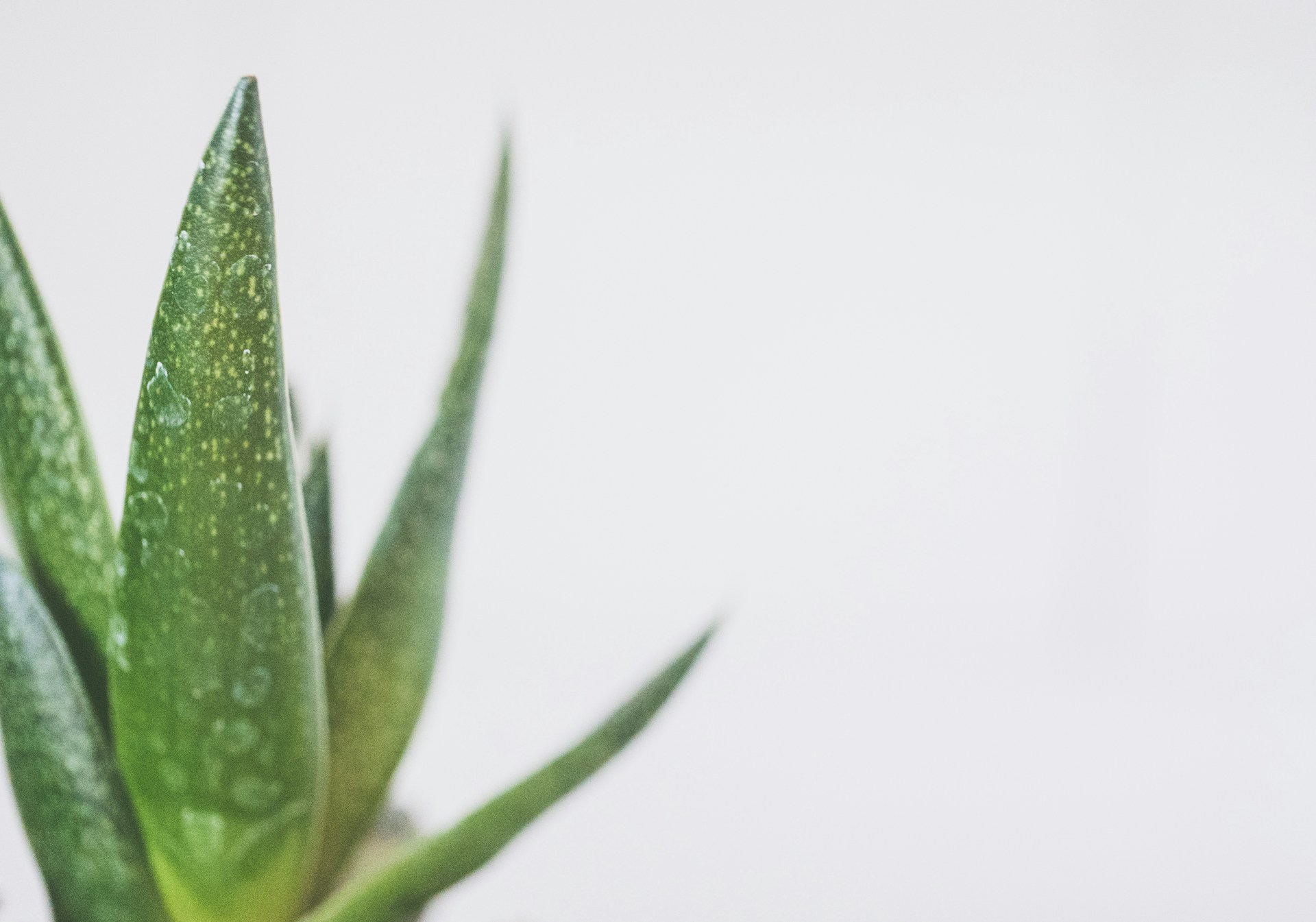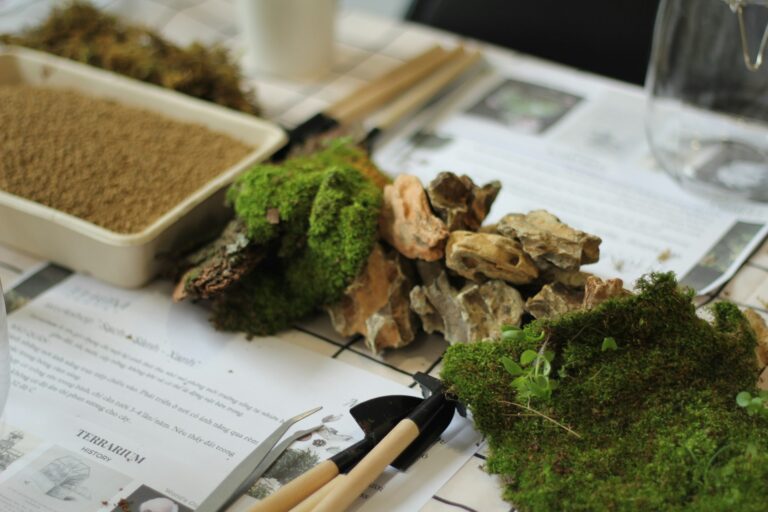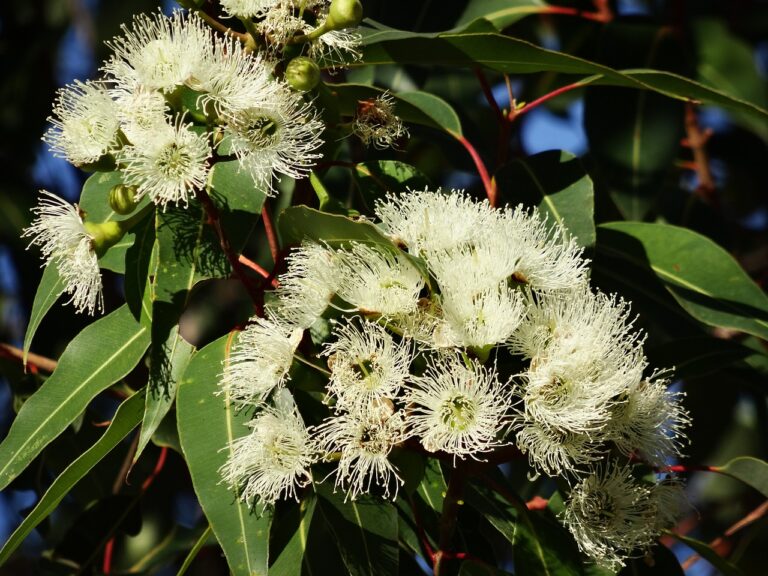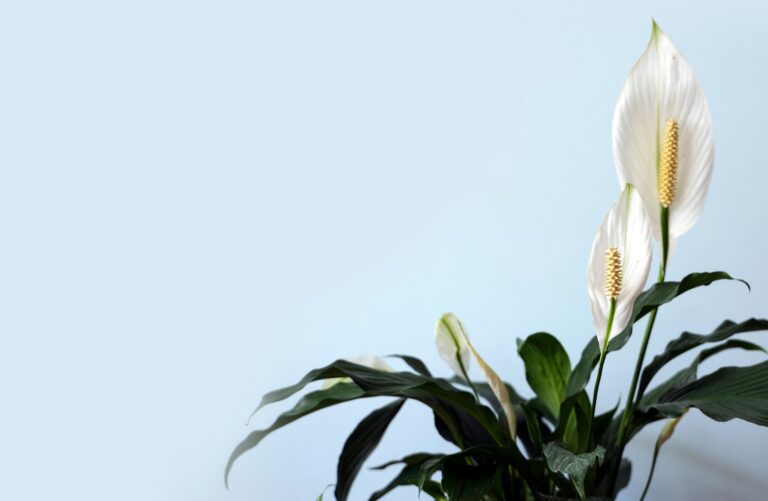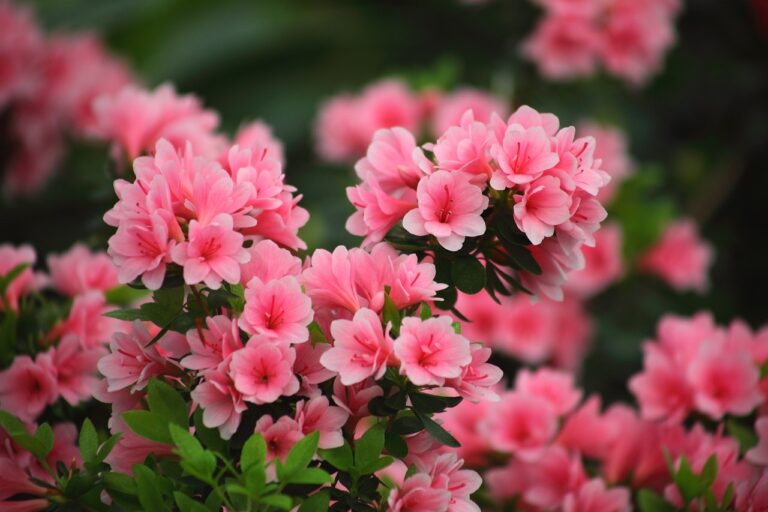Coastal succulent plants are a fascinating group of plants that have adapted to thrive in some of the harshest environments on earth.
Found in coastal regions around the world, these plants are characterized by their fleshy, water-storing leaves and stems, which allow them to survive in nutrient-poor, sandy soils, and withstand the challenging environmental conditions of the coastal zone, including salt spray, high winds, and intense sunlight.
While many coastal succulent plants are native to coastal regions, they are also commonly used in landscaping and gardening in coastal areas due to their unique appearance and ability to thrive in challenging conditions. Whether found in rocky coastal outcroppings or planted in seaside gardens, coastal succulent plants offer a beautiful and unique contribution to the world’s flora.
This article will give you the best coastal succulents to grow in your garden.
What are coastal plants?
Coastal succulent plants are plants adapted to grow in coastal environments, where the soil is often sandy and nutrient-poor, and the area is exposed to salt spray and strong winds. These plants are typically small and compact, with thick, fleshy leaves and stems that help them store water and nutrients.
Some common examples of coastal succulent plants include;
- Ice plants (such as Carpobrotus spp.),
- Sea figs (Carpobrotus edulis),
- Sea lavender (Limonium spp.),
- Kalanchoe (Kalanchoe spp),
- Dudleya (Dudleya spp),
- Crassula (Crassula spp),
- Sedum (Sedum spp),
- Echeveria (Echeveria spp),
- Aloe (Aloe spp),
- Agave (Agave spp).
These plants are often used in landscaping and gardening in coastal areas, as they are well-suited to the harsh conditions.
In addition to being adapted to the challenging environmental conditions found in coastal areas, many coastal succulent plants also have beautiful flowers, which can add a splash of color to gardens and landscapes.
15 Best coast succulent plants
Ice Plants (Carpobrotus spp)
Ice plants (Carpobrotus spp.) are a group of coastal succulent plants native to South Africa and have become popular in coastal regions around the world.
They are well-known for their colorful, daisy-like flowers and their ability to tolerate extreme heat and dry conditions, making them popular in xeriscaping and in coastal landscapes where they can help stabilize sandy soils.
Ice plants have a trailing or mat-forming growth habit, with succulent leaves that are often arranged in rosettes. The leaves can be green, gray-green, or blue-green in color, and they are covered with small, glistening cells that give the plant a frosted appearance. The flowers are daisy-like and come in shades of pink, purple, yellow, white, and red.
Ice plants are hardy and can tolerate a range of growing conditions, but they prefer full sun and well-draining soil. They are drought-tolerant and can handle salty, windy conditions, making them ideal for coastal gardens and landscapes. They can be propagated from stem cuttings or by division.
One of the benefits of ice plants is their ability to control erosion and stabilize soil on slopes and hillsides. Their mat-forming habit helps to prevent soil erosion, while their succulent leaves help to retain moisture in the soil. In addition, ice plants are valued for their ornamental qualities, with their colorful flowers adding a splash of color to low-maintenance landscapes.
Sea figs (Carpobrotus dimidiatus)
Sea figs (Carpobrotus dimidiatus) are a genus of coastal succulent plants native to South Africa that have been introduced in other parts of the world, including coastal regions of Australia, California, and the Mediterranean. They are known for their fleshy leaves and showy flowers, which make them popular in rock gardens, coastal landscapes, and as ground cover.
Sea figs have a spreading, mat-forming growth habit, with thick, succulent leaves that can be blue-green or gray-green in color. The leaves are covered in a waxy coating that helps the plant retain moisture and protect it from salt spray and other environmental stressors. The flowers are large, showy, and come in shades of pink, purple, white, and yellow.
Sea figs are hardy plants that can tolerate a range of growing conditions, but they prefer full sun and well-draining soil. They are drought-tolerant and can handle salty, windy conditions, making them ideal for coastal gardens and landscapes. They can be propagated from stem cuttings or by division.
One of the benefits of sea figs is their ability to stabilize soil and prevent erosion, making them a popular choice for beachfront properties and other areas that are prone to erosion. They are also valued for their ornamental qualities, with their low-growing, spreading habit and showy flowers making them a great addition to rock gardens and other low-maintenance landscapes.
It’s important to note, however, that sea figs can be invasive in some areas, particularly in California, where they have naturalized and are displacing native plant species. Therefore, it’s important to be aware of local regulations and recommendations regarding the planting and maintenance of sea figs in different regions.
Sea lavender (Limonium spp)
Sea lavender, also known as limonium, is a perennial flowering plant that belongs to the Plumbaginaceae family. It is one of the common coastal succulent plants found in coastal regions of Europe, North America, and Asia, where they grows in salt marshes, sand dunes, and other sandy, well-drained soils.
Sea lavender has a unique appearance, with tall, wiry stems that support small clusters of delicate, papery flowers. The flowers can be blue, purple, pink, or white, and they often have a dried, preserved appearance that adds to their charm. The plant’s leaves are thick, waxy, and often grow in a rosette pattern close to the ground.
One of the most notable characteristics of sea lavender is its ability to tolerate salty and windy conditions. This makes it a great choice for coastal gardens and landscapes, where other plants may struggle. Sea lavender is also relatively low-maintenance, requiring minimal watering and fertilizer. It can be propagated from seed or stem cuttings.
In addition to its ornamental qualities, sea lavender is also valued for its medicinal properties. The plant has been used for centuries to treat a variety of ailments, including respiratory conditions, skin irritations, and digestive problems.
Kalanchoe (Kalanchoe spp)
Kalanchoe (Kalanchoe spp) is a popular coastal succulent plant that is native to Madagascar but has been introduced to many coastal regions around the world. There are over 100 species of this plant.
In terms of care, kalanchoe plants are relatively low-maintenance. They prefer bright, indirect light and well-draining soil that is allowed to dry out slightly between watering. They are drought-tolerant and can be grown in a range of temperatures, but they should be protected from extreme heat and cold. Fertilizing once a month during the growing season can help encourage healthy growth and flowering.
Kalanchoe plants are easy to grow and care for, making them popular houseplants and garden plants. They are known for their fleshy, succulent leaves and clusters of small, tubular flowers that bloom in shades of pink, red, yellow, orange, and white. The flowers are long-lasting and can bloom for several weeks or even months, making kalanchoe plants a great choice for adding color to any room or garden.
Kalanchoe plants are also valued for their air-purifying qualities, as they can remove toxins such as benzene and formaldehyde from the air. They are also believed to have medicinal properties and have been used to treat conditions such as inflammation, pain, and infections.
Dudleya (Dudleya spp)
Dudleya (Dudleya spp.) is one of the coastal succulent plants that are native to coastal regions of California and Mexico. They are known for their distinctive, rosette-shaped foliage and attractive, often brightly colored flowers. In addition to their ornamental value, Dudleya is highly adaptable to coastal environments and can tolerate the harsh conditions often found in these regions.
Dudleya plants prefer well-draining soil and full to partial sun exposure to grow. They can be grown in a variety of soil types, but it is important that the soil does not retain too much moisture. They are drought-tolerant and can survive on natural rainfall alone in many coastal regions, but they can benefit from occasional watering during periods of extended drought.
Dudleya plants prefer cool to moderate temperatures, and can be damaged by extreme heat or cold. In areas with warmer temperatures, they may benefit from partial shade to protect them from direct sun exposure during the hottest part of the day.
Many species of Dudleya are endangered, and some are protected by law. It is important to purchase plants from reputable nurseries that do not harvest from the wild, and to avoid purchasing plants that have been collected from the wild.
Crassula (Crassula spp)
Crassula (Crassula spp.) is a diverse genus of coastal succulent plants native to various parts of the world, including Africa and Asia. They are known for their attractive foliage and hardiness, and are commonly used in coastal gardens for their adaptability to harsh coastal environments.
Crassula plants are typically small, but they can be very varied in form, size, and color, with some species producing rosettes of fleshy leaves and others growing as trailing vines. Most species produce clusters of small, star-shaped flowers in white, pink, or red.
Crassula plants are easy to care for and are relatively low-maintenance. They prefer well-draining soil and require moderate to full sun exposure, though some species can tolerate partial shade. Crassula plants are drought-tolerant and should be watered only when the soil is completely dry. Overwatering can cause root rot and other problems.
Crassula plants can be propagated by stem or leaf cuttings, which can be rooted in soil or water. Once established, Crassula plants require minimal pruning and do not require fertilization, though they can benefit from occasional feeding with a balanced fertilizer.
One of the most popular Crassula species is Crassula ovata, commonly known as the jade plant or money tree. This plant is known for its thick, fleshy leaves and branching habit, and is often grown as an indoor or outdoor ornamental plant. It is a popular housewarming gift in many cultures, as it is believed to bring good luck and prosperity.
Sedum (Sedum spp),
Sedum (Sedum spp.), commonly known as stonecrop, is among the best coastal succulent plants native to many parts of the world, including North America, Europe, and Asia. They are known for their attractive foliage and ability to thrive in various environmental conditions, including coastal environments.
Sedum grows well in areas with well-draining soil and full to partial sun to grow. Also, since it’s a hardy plant, it can grow in areas that receive minimum rainfall. You can water it occasionally if drought persists. Ensure that you don’t overwater the plant because it can lead to root rot, which in turn can kill your plant.
These plants prefer to grow in moderate to warm temperatures. Avoid placing it in cold or frost temperatures because they can kill the plant.
Sedum is a relatively low-maintenance plant and does not require much care beyond occasional pruning and watering. Since they are low maintenance plants, they make a good for your home.
Echeveria (Echeveria spp)
Echeveria (Echeveria spp.) is a popular genus of coastal succulent plants that are native to Mexico and Central America. They are known for their striking rosette-shaped foliage and colorful flowers, and are commonly grown as ornamental plants in coastal gardens.
Echeveria requires well-draining soil and full to partial sun exposure to grow. They are drought-tolerant and can survive on natural rainfall alone in many coastal regions. These plants prefer moderate to warm temperatures and can be damaged by frost and extreme cold.
The plant requires low-maintenance to grow, and you only need to water and prune it occasionally. With their low-maintenance care requirements and attractive appearance, they are an excellent option for homeowners looking to add a touch of color and texture to their landscaping.
It’s susceptible to pest infestations, such as mealybugs and spider mites. So monitor it regularly and treat any infestations promptly to prevent them from spreading.
Aloe (Aloe spp)
Aloe (Aloe spp.) is a coastal succulent plant native to Africa and Madagascar. It is known for its fleshy leaves and attractive flowers, and are commonly grown as ornamental plants in coastal gardens.
Aloe thrives in well-draining soil and full to partial sun to grow. Since it is a drought-tolerant plant, it can survive on natural rainfall alone, but you have to water it occasionally. Also, it grows well in areas with warm temperatures.
The plant does not like cold temperatures or frost, so ensure that you move it indoors during winter. You can purchase a grow light to provide it with extra lighting.
Aloe is a relatively low-maintenance plant and does not require much care beyond occasional pruning and watering. They can be propagated from stem cuttings or by division, and should be planted in areas with full to partial sun exposure.
When watering, ensure you drain off excess water. If you leave excess water on the soil, it can lead to overwatering. Keep in mind that the plant is susceptible to root rot. So giving it excess water can lead to root.
Agave (Agave spp)
Agave (Agave spp.) is also a coastal succulent plants that are native to North and Central America. It’s known for its rosette-shaped foliage and impressive size, and are commonly grown in coastal gardens.
It grows well in well-draining soil and exposure to full to partial sun to grow. Besides that, the plant is drought-tolerant and can survive on minimal water for a some time. Also, it prefers to grow in areas with warm to hot temperatures.
During winter, avoid planting it outdoors. If it’s in a container, you can move it indoors and place it in an area that receives lighting, such as a window. Or you can use a grow light for extra lighting.
Since it’s a coastal succulent plant, it requires low maintenance. You can provide it normal care and maintenance that a plant needs to grow. For instance, you prune the leaves and give it water when the soil is dry.
One thing to remember when planting Agave is that they can be quite large and may require a significant amount of space.
